When growing bonsai trees, knowing when to repot bonsai is crucial. It’s as important as giving your bonsai sunlight and water. This blog post will help you understand when and why you should repot your bonsai. It covers everything you need to know about keeping your bonsai’s roots healthy, how fresh soil can help it grow, and why root pruning is important.
Here are the topics we’ll cover:
- The main things that affect when you should repot your bonsai, like its age, type, and health.
- A step-by-step guide on how to repot your bonsai. This includes choosing the right materials and how to care for your bonsai after repotting.
- Common mistakes people make when repotting and how to avoid them.
- Why regular repotting is key to having a healthy and good-looking bonsai.
Why Repot a Bonsai?

The Heart of Bonsai: Root Health and Growth
One might say that the heart of a bonsai tree is in its roots.
The tiny, complex network hidden beneath the soil is responsible for absorbing nutrients and water, the essential lifelines for your bonsai.
Over time, however, this network can become congested and incapable of performing efficiently.
Repotting gives you a chance to gently untangle and prune the roots. It allows them to breathe and function more effectively, ultimately leading to healthier growth.
A Breath of Fresh Air: Benefits of Refreshing Soil
Just like us, bonsai trees enjoy a breath of fresh air. In their case, this comes in the form of fresh bonsai soil.
As your bonsai continues to thrive and grow, the soil it calls home gradually loses its nutritional value.
By introducing new soil during the repotting process, you’re replenishing these vital nutrients. Knowing when to report bonsai and doing so gives your tree a renewed vigor and sets the stage for optimal growth.
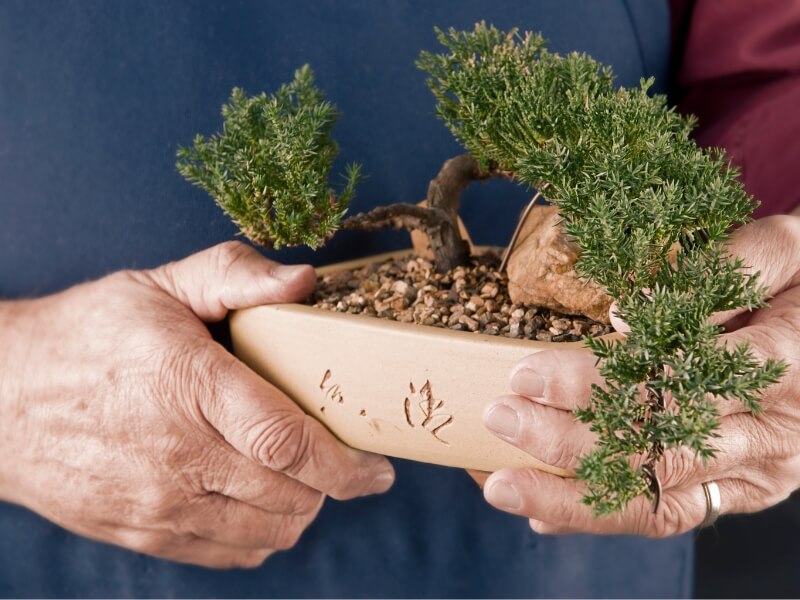
The Consequences of Neglect: When Bonsai are Left Unattended
Although bonsai trees are the epitome of patience and resilience, they cannot thrive without our care. When a bonsai tree is left in the same pot for too long without repotting, the roots can become overly congested. And the soil loses its nutritional value.
This can lead to the tree becoming weak, less vibrant, and in extreme cases, it can even cause the tree to die.
Regular repotting is, therefore, not just a part of bonsai maintenance—it’s an act of love.
When to Repot a Bonsai
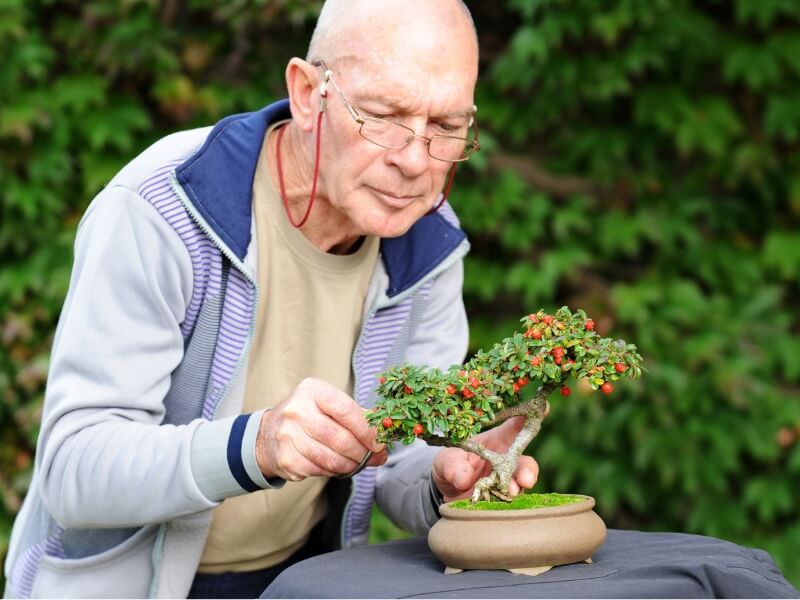
Considering the Factors: Age, Species, and Health
As a lover of bonsai, understanding your little tree’s needs is paramount. One critical aspect is knowing when to repot bonsai.
A few key factors can guide you in making this decision:
- the age of your bonsai
- its specific species
- the current health status of the tree
Younger trees, being in their vigorous growth phase, may need to be repotted every year or two.
As they age, the frequency decreases, with mature trees requiring repotting every three to five years.
Different species of bonsai have different growing seasons and repotting requirements.
For instance, tropical and subtropical species do best when repotted in late spring or early summer, while deciduous trees prefer late winter or early spring.
Lastly, always consider the health of your bonsai. A tree that is stressed or unwell might not withstand the repotting process.
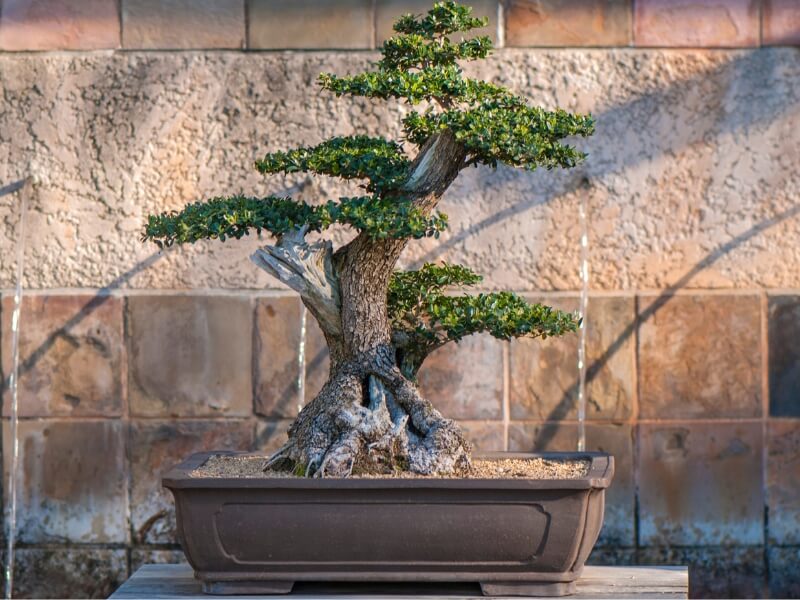
General Repotting Timeline for Different Species
Each species of bonsai has a slightly different timeline for when they should be repotted.
Fast-growing species such as the Trident Maple may need annual repotting. Slower growers, like the Japanese Black Pine, might only require a repot every two to three years.
It’s essential to research your particular bonsai species to determine its optimal repotting schedule.
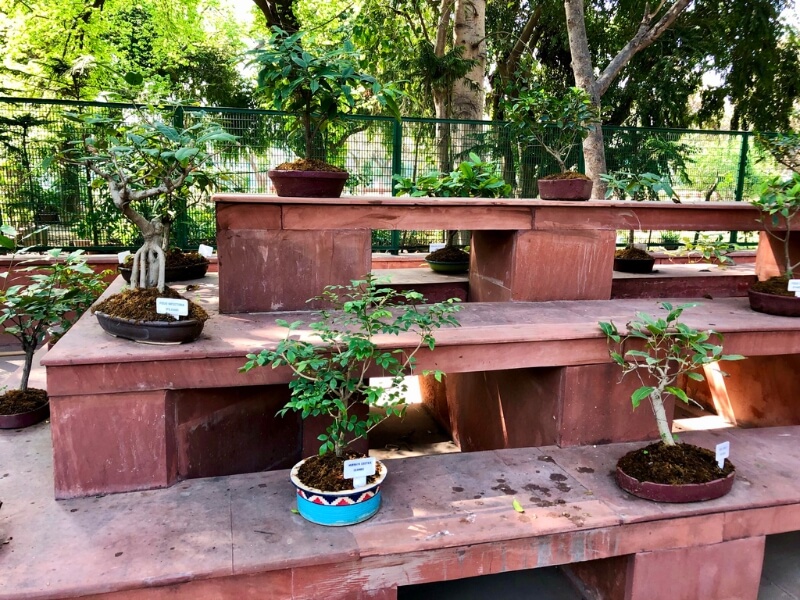
Signs Your Bonsai Tree Needs Repotting
Sometimes, your bonsai will give you little hints that it’s ready for a fresh start in a new pot. These may include:
- roots circling the exterior of the pot or pushing the tree upward
- a decrease in foliage growth
- water sitting on the soil’s surface for longer periods
These signs indicate that the root system is becoming congested, and the soil is losing its ability to retain nutrients effectively.
Repotting Bonsai: Step-by-Step Guide
In this section, we will provide a step-by-step guide on how to repot your bonsai without damaging its roots. Materials needed for repotting:
- A bonsai container
- Mesh screen
- Soil mix (akadama, pumice, and lava rock)
- Pruning shears
- Wire cutter
- Root hook
- Watering can
- Scissors
Step 1: Choose the Right Time to Repot
Knowing when to repot bonsai is essential. It is recommended to do so when the bonsai is dormant or when new buds are emerging. Spring is an ideal time for repotting as the bonsai will have enough time to recover before the summer heat.
Step 2: Remove the bonsai from its container
Gently remove the bonsai from its container. Be careful not to damage the roots. Remove as much of the old soil as possible, but be gentle so as not to damage any of the delicate roots.
Step 3: Trim the Roots
Using sharp pruning shears, trim any dead or damaged roots. Also, look for any circling or tangled roots and trim them as well. Use a root hook or scissors to untangle any roots that are wrapped around each other.
Step 4: Prepare the New Container
Place a piece of mesh screen over the drainage holes in the bottom of the new container. This will prevent the soil from falling through the holes. Add a layer of soil mix to the bottom of the container.

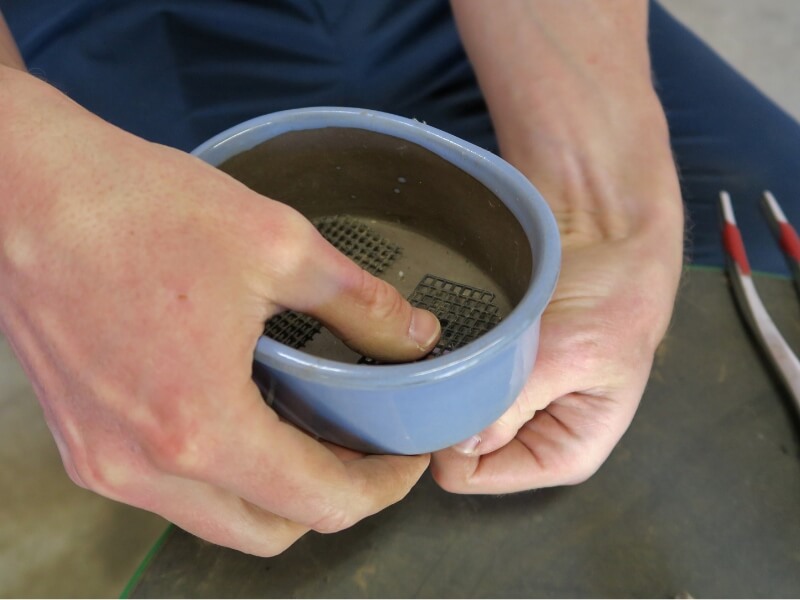
Step 5: Replant the Bonsai
Gently position the bonsai in the container. Add soil mix around the roots, making sure to distribute it evenly. Tap the container gently to remove any air pockets. Water the bonsai thoroughly.
Common Mistakes to Avoid When Repotting Your Bonsai
Now that you already know why, when, and how to repot bonsai trees, let’s talk about some common pitfalls bonsai enthusiasts should avoid during repotting.
Overlooking Root Pruning
Insufficient root pruning can lead to a congested root system, which hampers the absorption of vital nutrients.
While pruning, trim back the outer root ball to encourage new growth and keep the bonsai in balance.
However, remember to be gentle and avoid causing extreme stress to the tree.
Improper Watering
Watering your bonsai is an art in itself.
After repotting, it’s crucial to strike a balance in watering. Over-watering can lead to root rot, while under-watering may leave the tree dehydrated.
Observing your tree and understanding its needs will help maintain the right moisture balance.
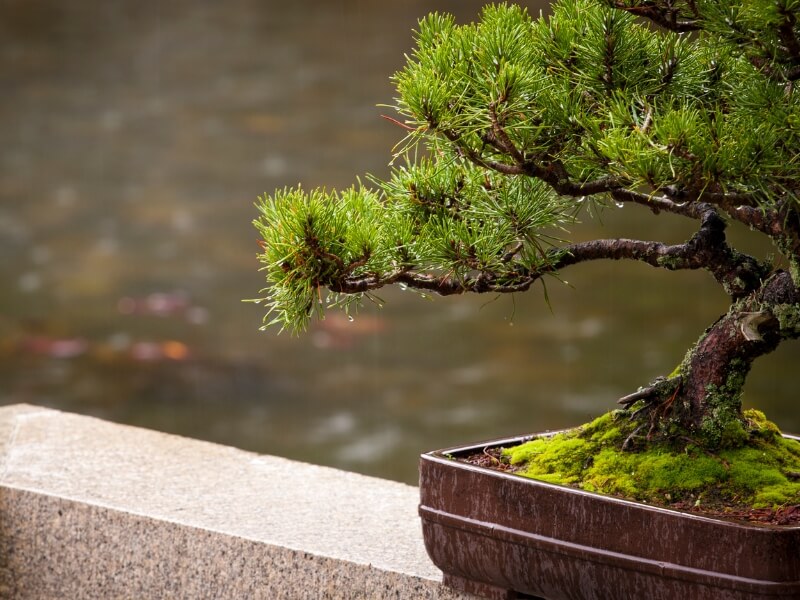
Choosing the Wrong Soil Mix
The right soil mix is crucial for your bonsai’s growth and health. A well-draining soil that retains enough moisture and nutrients is ideal.
Ensure your soil mix has components like akadama, pumice, and lava rock.
Avoid using garden soil or potting compost as they may not provide the necessary drainage and can compact over time.
Repotting at the Wrong Time of Year
Each bonsai species has a preferred season for repotting, generally when the tree is dormant or when new buds are emerging.
Repotting at the wrong time can cause unnecessary stress to the tree. Always research your specific bonsai species to determine the optimal repotting period.

By avoiding these common mistakes, you can make the repotting process a lot smoother and more beneficial for your bonsai.
Conclusion: Cultivating Bonsai Brilliance
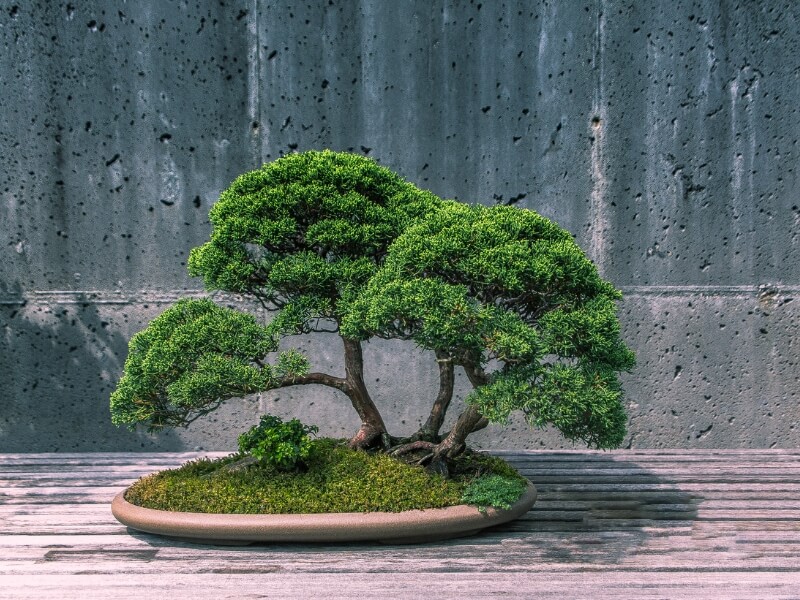
In this bonsai journey, we’ve uncovered the art and science of knowing when to repot a bonsai. Here’s a quick recap of the key insights we’ve gathered:
- Regular repotting is pivotal to the health of your bonsai tree. It prevents root congestion, promotes vigorous growth, and ensures the soil remains nutrient-rich.
- Recognizing the signs that your bonsai is ready for repotting, such as diminished foliage growth and water sitting atop the soil, can guide you in knowing when exactly to embark on this process.
- Each species has its unique repotting timeline, so a little research goes a long way.
- The repotting process, while delicate, can be carried out smoothly with the right tools and a gentle touch. Remember to prune the roots carefully, choose the right soil mix, and water your bonsai generously after repotting.
- Avoid common repotting pitfalls to protect your bonsai tree from undue stress and enhance its overall growth and aesthetics.
We hope this guide serves as a helpful tool in your bonsai repotting. For more tips and insights into the delicate art of bonsai care, we invite you to read our other blogs on the website.



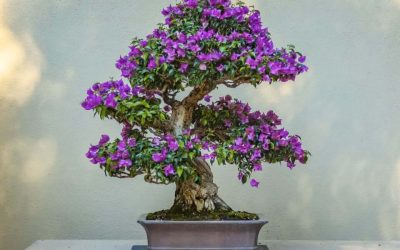
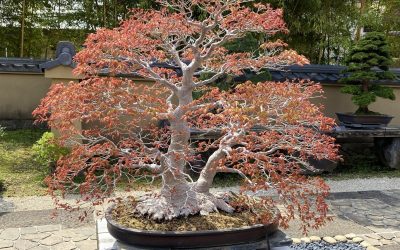
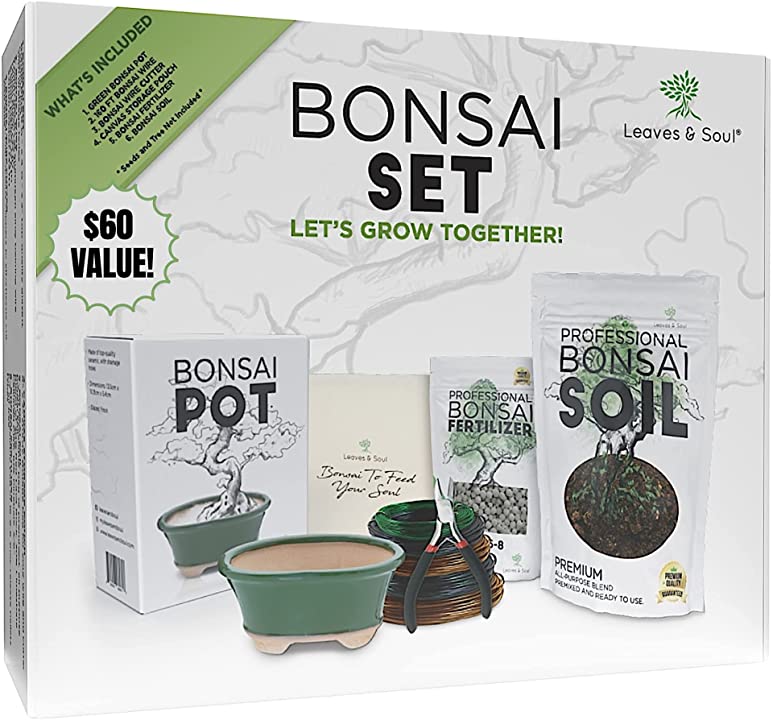
0 Comments